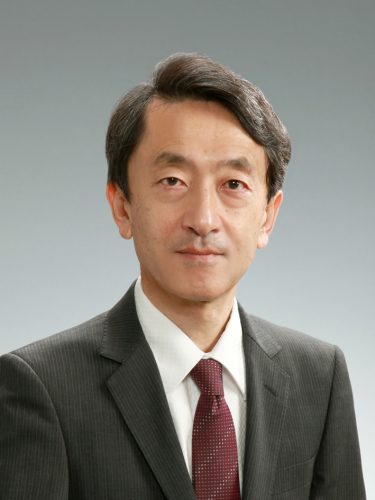
The Earthquake Research Institute (ERI) was established in 1925 to promote scientific research on earthquakes and volcanic eruptions and develop methods for mitigating associated disasters. Our research targets not only include the forecasting of earthquakes and volcanic eruptions and the search for disaster mitigation measures, but also the understanding of the structure and dynamics of the Earth’s interior that cause these phenomena. In addition, ERI conducts comprehensive research on historical earthquakes in collaboration with the Historiographical Institute and on disaster information with the Center for Integrated Disaster Information Research, Interfaculty Initiative
in Information Studies. Furthermore, many faculty members participate in joint research organizations at the University of Tokyo to explore new research fields through academic fusion.
ERI, as a Joint Usage/Research Center of Japanese universities on earthquake and volcano sciences, provides facilities, equipment, data, and other resources to the research community. ERI also regularly invites applications for joint research projects nationwide and accepts visiting researchers from Japan and abroad. Based on the proposition of the Council for Science and Technology, ERI plays a central role in planning and promoting “Earthquake and Volcano Hazards Observation and Research Program” along with universities and national research institutes across Japan. To promote public participation and emphasize the importance of societal contribution in research results, ERI invite applications for joint research projects in collaboration with Disaster Prevention Research Institute, Kyoto University, a center for comprehensive research on natural disaster prevention.
Though it has been more than a decade since the Great East Japan Earthquake of 2011, its effects of seismic activity and crustal deformations continue to be noted around Japan. There are also concerns regarding subsequent huge earthquakes in the Japan Trench, Kuril Islands Trench, Nankai Trough in the near future. The 2021 Ogasawara submarine volcanic eruption ejected large amounts of pumice, and the Tonga volcanic eruption generated a meteorological tsunami along the coast of Japan 8,000 km away due to the atmospheric (Lamb) wave.
To address these global-scale issues of earthquake and volcano disaster mitigation, in the coming years, ERI intends to develop advanced observation systems, establish a large-scale observational data distribution and archiving system, and accelerate leading-edge data science research that integrates information science, computer science, and geophysics. ERI also aims to lead advanced international collaborative research and establish an environment that brings together diverse human resources, allowing them to fully demonstrate their abilities. In addition, ERI intended to focus on public relation activities to increase societal involvement in research results, while working with Graduate Schools of The University of Tokyo to develop highly skilled human resources for the future.
We look forward to your continued support and cooperation.
HISTORY OF ERI
Established on November 13th 1925, the Earthquake Research Institute (ERI), took over the research project which
had been run by the government at the time. For over thirty years, the research activities had contributed to the development of the seismology in Japan. In June 1928, it officially became an institute of Tokyo Imperial University.
After World War II, the institute was re-established as one of the research institutes of the University of Tokyo. Following the nation- wide cooperative Earthquake Prediction Program that started in 1965 and the Volcanic Eruption Prediction Program in 1974, ERI played a core role in bearing the heaviest responsibilities for their implementation, as well as serving as the central institute for fundamental geophysical researches in Japan.
In the last few decades, various cooperative studies, such as seismic observations in several inland areas, seismic and geophysical observations in the ocean, application of Global Positioning System (GPS), seismic observations by a network covering the whole of the western Pacific under the POSEIDON Project, and experiments on volcanic structure and magma supply system, have been planned and conducted as joint researches among the universities and institutes in Japan.
To promote these projects further, ERI was re-organized in 1994 as a shared institute of the University. The reorganized ERI consisted of four divisions, five centers, and two observatories providing positions for visiting professors, and formulating the system for cooperative studies.
In April 1997, the Ocean Hemisphere Research Center was established to develop and operate a global multidisciplinary network in the Pacific hemisphere consisting of seismic, geoelectromagnetic, and geodetic observations.
With the completion of the new base-isolated building (Building 1) in 2006, followed by the anti-seismic reinforcement of the old building (Building 2), ERI’s capacity to respond to large earthquakes in Tokyo has increased
In 2009, the Coordination Center for Prediction Research of Earthquakes and Volcanic Eruptions was established to promote collaboration of researches of earthquake predictions and volcanic eruptions.
In 2010, ERI was re-organized as a joint usage/research center of Japanese universities for earthquake and volcano researches with four research divisions and seven centers including the Center for High Energy Geophysics Research. The new organization will enable ERI to provide flexible frame-work for diverse and multi-disciplinary observational solid earth sciences.
In 2012, Research Center for Large-Scale Earthquake, Tsunami and Disaster was established in order to construct the theory and develop the method of advanced numerical analysis for conducting the research on forecasting large-scale earthquake and tsunami.
In 2014, ERI has started to join hands with the Disaster Prevention Research Institute, Kyoto University, which is the Joint Usage/Research Center for integrated disaster science concerning natural disasters.

